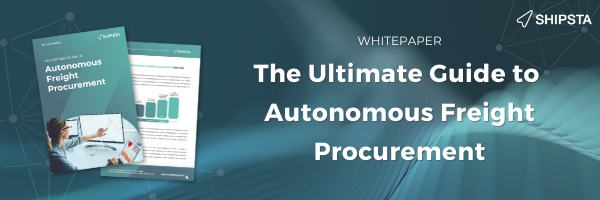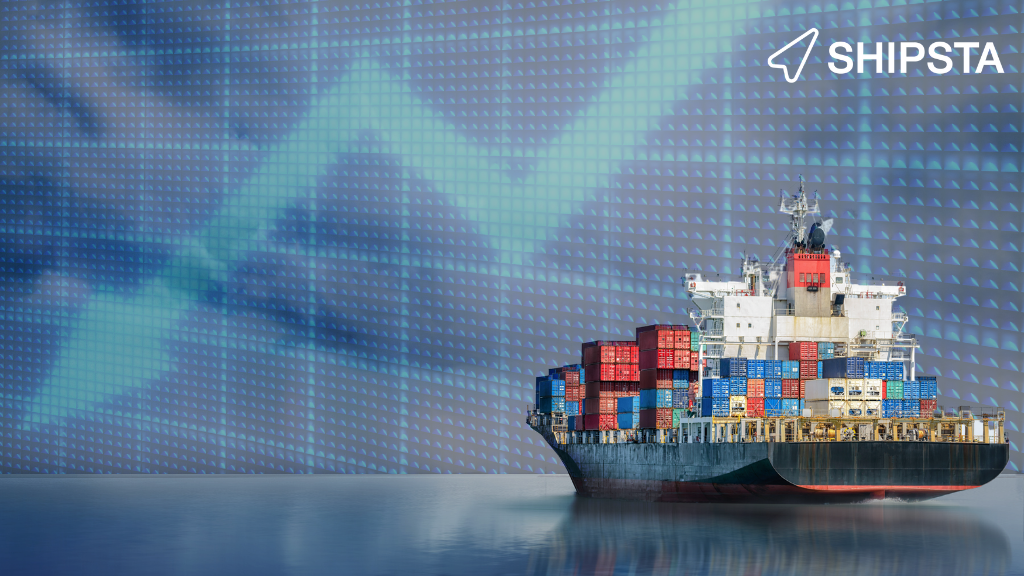Over the last two years, chaos has been the norm for the freight market. So, how can an even bigger shakeup be underway as we speak?
Since 2020, spot and contract rates have been increasing or remaining at eye-watering highs. There have been huge disruptions which have all only served to push rates up even higher.

So, what is this new shockwave shippers need to be ready for? Spot rates have started falling for the first time in years – and it looks like this could be a long-term drop. This is good news for shippers and CFOs who’ve anxiously been waiting for a drop in the market.
However, this fall in spot rates means shippers need to implement a whole new strategy and be ready to strike at the right moment to clinch strong long-term rates.
Spot rates are falling – and contract will follow
The drop we’re seeing now is not what many experts predicted. Freight rates were expected to continue to grow or remain stagnant at least until H2 2022.
As of mid-July, the Drewry Container Composite Index was 20% lower than a year ago. Key trade routes from Shanghai to the west are all dropping. And major news outlets are reporting on the pressure Chinese factories are facing as western consumer demand spirals.
The contract market stayed surprisingly resilient, despite falling spot rates. This led to the extremely unusual situation where long-term contract prices were higher than spot. The strength of the contract market reflects shippers' caution after years of rate volatility. They were too accustomed to snag rates quickly in the fast-growing market, regardless of what was happening on the spot side. What does price matter when the next container shortage or port blockage is around the corner?
However, caution can’t last forever. Contract prices are starting to follow spot.
We’re already seeing key lanes drop their contract rates. Just like spot prices, this decline will be global. For the first time in years, freight procurement teams need to change their tactics.
Chaos is a ladder – how can shippers win in this market?
This new market is the biggest shakeup we’ve seen in years. Since 2020, freight procurement teams have focused on resilience and securing capacity. They’ve been at the mercy of carriers – taking whatever they can get in the capacity-short market. But now, for the first time in a long time, they’re in the driver’s seat in negotiations.
Capacity is growing. As consumer buying falls, shipping companies simply have less cargo to move. Now shippers can finally secure strong rates for their teams. To reap the best rewards in this new market, shippers must refocus their strategy and focus on the following:
- Tendering at the perfect moment - Shippers must track their key lanes and clinch lower freight rates when prices start to fall.
- Adjusting long-term contracts – Shippers are turning to their suppliers to see how they can adjust their agreements to bring them in line with current market rates.
- Expanding carrier networks – Gone are the days shippers need to be loyal to secure transport. Now’s the time to shop around to find the best rates.
- Avoiding unessential costs – The market may be turning – but now is not the time to be spend happy. The market is still soaring above the pre-covid rates and more disruptions could still be around the corner. Shipper must continue to increase efficiency and look for opportunities to save.
If shippers want to achieve these changes, innovating their strategy is essential. Leaders in the industry are adopting autonomous freight procurement technology to track the rapidly changing market for them and tender for them at the perfect moment.
The possibilities this tech offers are in their infancy, but procurement teams are already able to achieve massive results. They’re able to reduce time to tender down from hours to just minutes – and make truly smart decisions based on real-time market and internal data.
This sudden drop in the market was unexpected. Whilst it could last for months – or even years – the next market shakeup is undoubtably around the corner. Climate change, war in Europe, oil and gas fluctuations and economic uncertainty will keep freight procurement teams on their toes for years to come. And if logistics managers aren’t rapidly digitizing and modernizing their strategies now – they risk long-term instability across their entire company.



